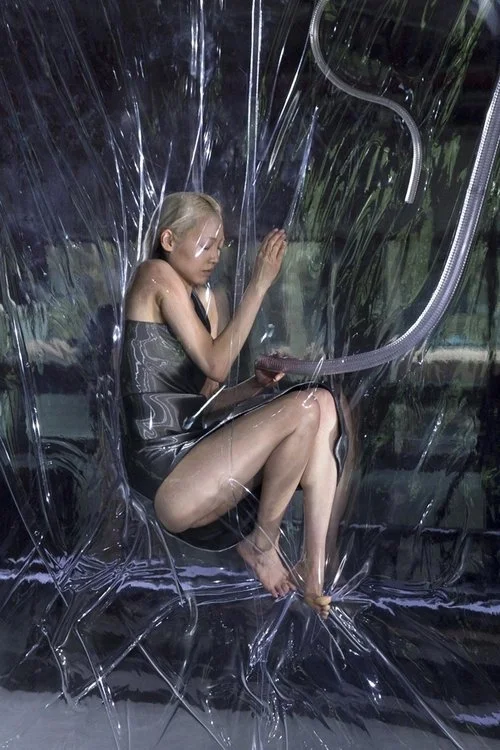Circus Girl
With CircusGirl occupying the centre of the stage, this editorial, shot in Berlin by Ioannis Papadakis and styled by Tim Heyduck, investigates the public dimension of every clown act—a theatre with no actors, only a performance with a question mark.
dress LOU DE BETOLY shoes SIA ARNIKA
Hello CircusGirl, where are you based?
Glasgow.
dress LOU DE BETOLY
Clowning has become a trend and people are copying your work. How does someone become a clown?
Being a clown is not fashionable, it’s a way of being so not everyone can become one. A clown serves functions to society for entertainment. It is a social role, not something you choose to be. A clown is a question mark.
dress LOU DE BETOLY
You’re here today with us in Berlin, and you are painted as a clown for this interview and shoot. Are you always travelling with your make-up kit ready to perform?
What make-up?
dress LOU DE BETOLY. top LOU DE BETOLY pants and collar STYLIST’S OWN shoes SIA ARNIKA
Tell me about the first time you painted your face.
I don’t remember! Oops! I have painted my face for so long that I wish I could remember.
top LOU DE BETOLY pants STYLIST’S OWN
Once you told me you portray melancholy and innocence but at the same time depict erotica with disturbance. Is there a line for you between mixing erotica with performance art?
A clown is only for show, a clown does not have private conversations (sex and art do get mixed).
full look STYLIST’S OWN shoes SIA ARNIKA
Why do you think people are so attracted to clowning and its performance? Is it because of the mystery behind the painted face?
Yes, I find it fascinating the way you move your body. You can tell a story without saying one word. The joy it brings, but also the sadness. Innocence with darkness. Sex and fear.
ull look STYLIST’S OWN shoes SIA ARNIKA
Clowns are known to have the ability to switch moods in an instant. Was this hard for you to master?
No.
dress SIA ARNIKA
Is clowning a fetish for some people? Do you perform online? If so, do people pay for it?
A clown issues a cost. Financial, spiritual or psychological.
Favourite artists you wish to collaborate with in future?
…
coat SIA ARNIKA boots and bra OLIVIA BALLARD
talent CIRCUS GIRL
photographer IOANNIS PAPADAKIS
stylist TIM HEYDUCK
interview by IOANNIS PAPADAKIS
edited by DAVIDE ANDREATTA
What to read next

















